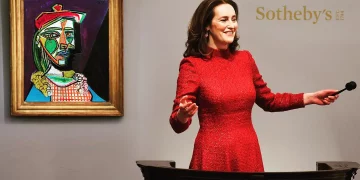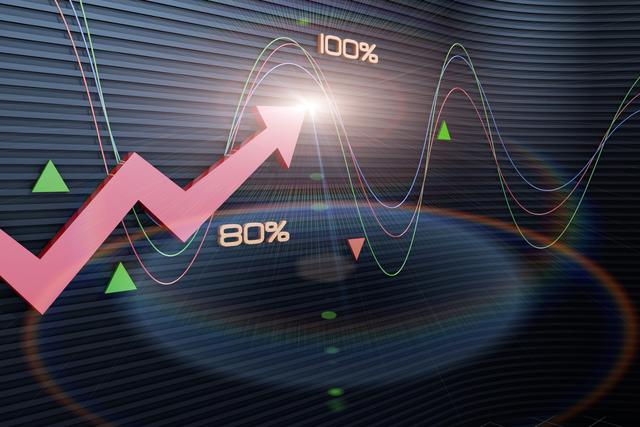The collectibles market, much like other financial markets, is driven by the fundamental economic principles of supply and demand. When these forces shift, they can significantly affect the valuation of collectibles and, consequently, the decisions of investors. Whether dealing with art, vintage cars, watches, sports memorabilia, or rare digital assets like NFTs, fluctuations in supply and demand play a crucial role in shaping market dynamics.
In this article, we will explore how changes in supply and demand impact investor behavior in the collectibles market and what factors are likely to drive these shifts in the future. Understanding these elements will help collectors and investors navigate the complex world of collectible investments.
1. The Basic Principle of Supply and Demand in the Collectibles Market
At its core, the supply and demand model explains that the price and value of any collectible are influenced by the relationship between how available an item is (supply) and how much people want it (demand).
- Supply: The availability of an item, whether due to its rarity, the number of units produced, or its limited release, is a key factor in determining its value. The scarcer an item, the higher its potential value, provided demand remains strong. For example, a one-of-a-kind painting or a rare vintage car typically commands higher prices due to the limited supply.
- Demand: The desire for an item, which is often driven by cultural trends, economic conditions, and personal preferences, also influences its price. As demand for an item increases—often fueled by nostalgia, celebrity endorsements, or trends in pop culture—its value can skyrocket.
When these forces interact, they create price fluctuations. If demand increases and supply remains static or decreases, prices will rise. Conversely, if demand falls while supply remains high, prices will decrease. Investors must understand these dynamics to make informed decisions in a constantly shifting market.
2. How Changes in Supply Impact Investor Decisions
Changes in supply directly affect the pricing dynamics of collectible items. There are several ways in which supply can fluctuate, and these shifts can influence the strategies that investors adopt in the market.
A. Limited Supply Increases Value
When the supply of a particular item is inherently limited, whether due to limited edition releases, discontinued products, or items that are no longer being produced, it often increases demand and drives prices higher.
Example: Certain luxury watch brands like Rolex produce limited-edition models that have a strong historical pedigree. The scarcity of these models drives up their desirability. Similarly, collectible sneakers such as Nike Air Jordans are often released in limited quantities, and their rarity significantly boosts demand in the resale market.
Investor Impact: In this scenario, investors are likely to see these items as safe, long-term investments. The perceived scarcity of the product creates an opportunity for capital appreciation as the value of the item grows over time. For investors, limited supply signals an opportunity to buy before prices increase due to rising demand.
B. Oversupply and Its Effects on Value
On the flip side, if too many units of a collectible item are produced, or if a particular category of collectibles becomes oversaturated with similar items, the market can suffer from a lack of exclusivity. This can lead to a decline in value.
Example: The market for certain pop culture memorabilia, such as comic books or action figures, can become oversaturated if there are large-scale mass productions, which diminishes their rarity and desirability.
Investor Impact: In an oversupplied market, investors may reconsider their interest in certain categories, as these collectibles will likely experience depreciation over time. Investors who bought early may try to liquidate their holdings before values fall too dramatically, while those entering the market may shift their focus to rarer or more exclusive items.
C. The Role of Limited-Time Events and Production Runs
Collectors often anticipate value appreciation based on limited production runs. Auctions, estate sales, and special collaborations can affect the overall supply in a particular category. If an item is associated with a specific cultural event or milestone (e.g., a special edition video game console tied to a franchise anniversary), its limited availability can boost its demand.
Example: Certain high-end art galleries or auction houses limit the availability of specific pieces by well-known artists, making them even more valuable and sought after by collectors.
Investor Impact: Savvy investors will often time their purchases based on these limited-time opportunities, betting that the exclusivity of the item will result in a strong market performance in the long run. In such cases, the scarcity premium plays a crucial role in the investor’s decision-making process.

3. How Demand Changes Affect Investor Behavior
Demand fluctuations often have a more immediate effect on collectible pricing than supply changes because they are tied to consumer trends, social influences, and broader economic factors. Investor decisions are highly influenced by the perceived strength of demand in a given category.
A. Cultural Trends and Popularity
Demand for certain collectibles can be heavily influenced by shifting cultural trends or the rise of new interests. For instance, the resurgence of interest in specific genres of pop culture or the increasing popularity of certain hobbies can spark a surge in demand for related collectibles.
Example: The popularity of Star Wars and Marvel films has had a significant impact on the market for related memorabilia, from action figures to movie posters. Similarly, as new video games gain traction, collectibles tied to these games—whether they are limited edition consoles or in-game items—often see a spike in demand.
Investor Impact: As cultural trends evolve, investors often capitalize on the early stage of demand by acquiring collectibles that are likely to benefit from these trends. These timing strategies are key for those looking to maximize returns.
B. Social Media and Celebrity Influence
Social media platforms and celebrity endorsements can dramatically affect demand. When a well-known personality or influencer shares their collection, or a brand collaborates with a celebrity, demand for related collectibles can increase exponentially.
Example: High-profile figures such as LeBron James or Michael Jordan can significantly affect the value of memorabilia associated with them. For instance, a signed basketball jersey or trading card might increase in value after being featured on social media or at a public event.
Investor Impact: Investors who can predict the social trends or anticipate which celebrity endorsements will create a spike in demand may benefit by purchasing such items ahead of time, before the prices rise due to heightened interest.
C. Demographic Shifts
As younger generations become more involved in collecting, new types of collectibles, particularly digital and hybrid items, may see increased demand. Items like NFTs, digital art, or even video game-related assets are gaining traction as the primary collectibles for younger buyers.
Example: NFTs, which represent a growing segment of the digital art market, have become a significant trend among younger collectors, who view them not just as art, but as investments with a potential for high returns.
Investor Impact: Investors with a forward-thinking mindset may choose to enter emerging markets and diversify their portfolios into newer forms of collectibles, betting on the demand growth tied to the digital age.
4. How to Navigate Changing Supply and Demand Dynamics
To successfully navigate the changing supply and demand dynamics in the collectibles market, investors need to develop a strategic approach:
A. Research and Timing
Understanding market cycles and conducting thorough research are key to making informed investment decisions. Investors should track auction results, market trends, and broader economic shifts to gauge when demand is likely to peak or wane. Timing purchases during low demand and selling during high demand can yield significant returns.
B. Diversification
Diversifying one’s collection across different categories of collectibles can mitigate risks. For example, a portfolio that includes both traditional collectibles (e.g., art, rare coins) and emerging assets (e.g., NFTs, digital art) is less vulnerable to shifts in a single category’s supply and demand.
C. Collaboration with Experts
Investors who want to maximize returns should consider collaborating with experts or advisors who specialize in specific collectible categories. These professionals can offer valuable insight into how supply and demand are shifting and which items are likely to see growth.
Conclusion: The Power of Supply and Demand in Collectibles Investing
Changes in supply and demand will continue to have a profound impact on the collectibles market, affecting both pricing and investor behavior. By understanding the forces driving these changes, investors can better predict price fluctuations and make more informed investment decisions. Whether responding to cultural trends, economic conditions, or technological advancements, predicting future supply and demand dynamics will be crucial for long-term success in the collectibles market.
Successful investors will need to stay agile, monitor market trends closely, and be prepared to adjust their strategies in response to supply and demand shifts. By doing so, they can capitalize on emerging opportunities, navigate potential downturns, and make the most of the ever-evolving collectibles landscape.

















































